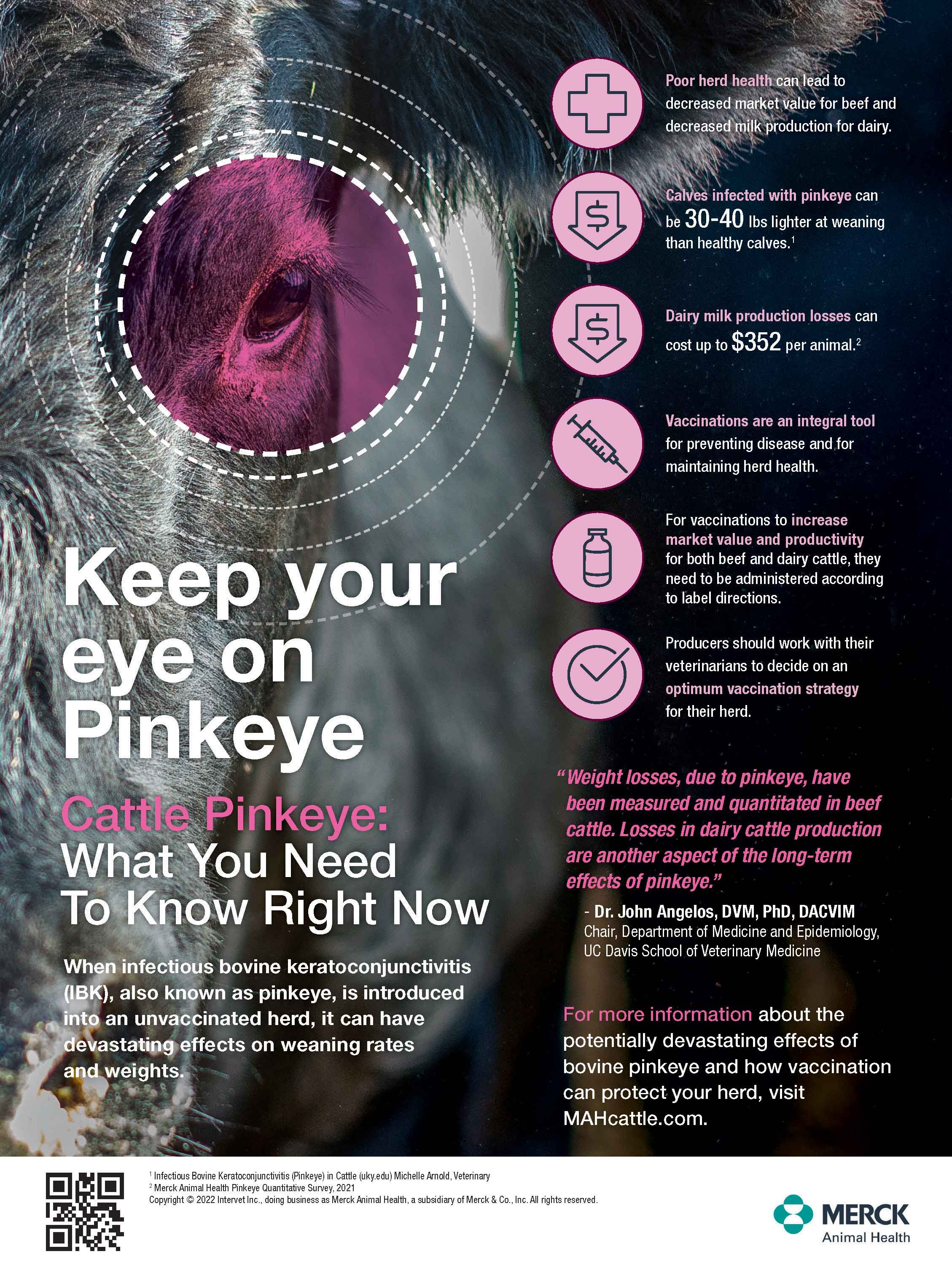A Healthy Herd Equals a Healthy Bottom Line: The experts weigh in
Infectious Bovine Keratoconjunctivitis (IBK), also known as pinkeye, is a complicated and costly disease for beef and dairy producers. According to the article Infectious Bovine Keratoconjunctivitis (Pinkeye) in Cattle1, “tremendous losses occur from poor weight gain and loss of appetite in affected animals suffering from visual impairment. The largest economic loss is incurred through decreased growth as affected calves are on average 35–40 pounds lighter at wean-ing compared to healthy calves. Lower performance in post-weaning cattle has also been documented with reduced average daily gain, 365-day weight and final weight.”
When it comes to understanding how bovine pinkeye progresses in a herd, Lowell Midla, VMD, MS, veterinary technical services manager with Merck Animal Health and beef cattle producer, also weighs in on the progression of the disease and how it can prevent an animal from thriving. “We are stewards of these animals, so it’s important to understand the pain of pinkeye. Then we can appreciate how that pain can cause a calf not to gain weight or even lose weight,” says Midla. “So, for those animals with lower weaning weights or production loss, their potential value can suffer. With purebred animals that producers are trying to market for their genetics, even just little leftover scars sometimes will affect their worth as breeding stock.”
Why take a preventive vaccination approach? The drug cost for treatment, decreased market value due to corneal scarring, the loss of value of show and breeding stock, and reduced milk production from dairy animals make pinkeye a significant economic consideration.
A recent Farm Journal study conducted on behalf of Merck Animal Health2 has found pinkeye losses can exceed $100 per incidence in beef cattle. For seed stock or dairy replacement heifers, the discounts for animals with lesions or damaged eyes can far exceed production losses by hundreds of dollars. That’s why a comprehensive vaccination program works as part of a three-pronged approach that includes fly control and environmental management. “And if you’re really serious about using a pinkeye vaccine, they need two doses,” says Gerald Stokka, DVM, MS, North Dakota State University Extension veterinarian and livestock stewardship specialist. “If we believe the single dose of a pinkeye vaccine given at 60 days of age is going to prevent most of the bacterial infections associated with that vaccine—well, that’s not a very good strategy. They need two doses before the fly season comes.”
It’s obvious bovine pinkeye is a multifaceted disease with layers of consequences if not anticipated and addressed before it has a chance to do significant damage. “We vaccinate every year on our own farm, I have recommended that to clients over the years,” said Midla. “I like to stick to things that are evidence-based.”
Preventing pinkeye in as many animals as possible will keep more money in a producer’s pocket and provide a better quality of life for the entire herd.
For more information on pinkeye vaccination, visit StopCattlePinkeye.com
For the next article in this series, click here
1 Infectious Bovine Keratoconjunctivitis (Pinkeye) in Cattle (uky.edu) Michelle Arnold, Veterinary Diagnostic Laboratory; Jeff Lehmkuhler, Animal and Food Sciences; University of Kentucky College of Agriculture, Lexington, KY.
2 Merck Quantitative Pinkeye Survey, 2021, Farm Journal, Lenexa, KS.








